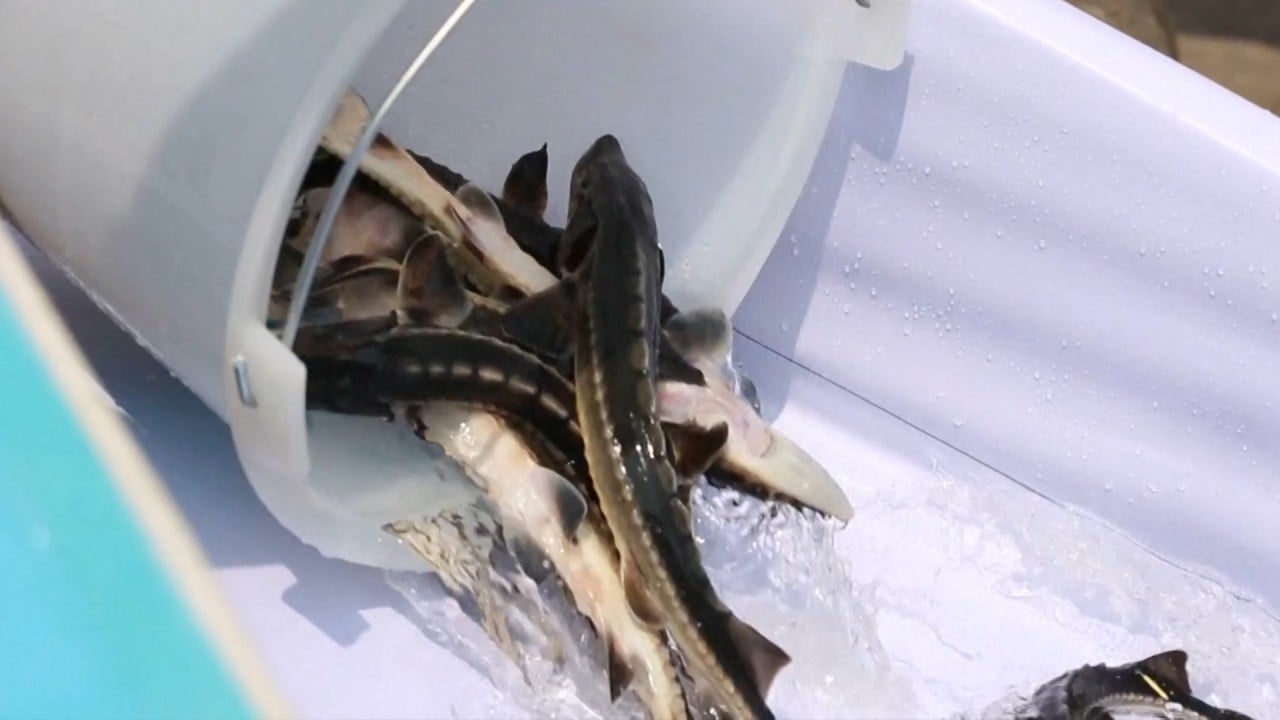
Chinese state firm’s wetland destruction shows mangrove habitat still under threat
- Dubbed ‘coastguards’, mangrove forests are among Earth’s most biodiverse and productive marine ecosystems, but they have been damaged by human activity
- China has improved vastly since 2000, but mangrove protection and environmental inspections could be stepped up, experts say
A port construction project in the Beibu Gulf in Guangxi Zhuang autonomous region, operated by Beibu Gulf Port Group, had killed almost 38,000 mangrove plants covering 257 mu (17 hectares, 42 acres) of shoreline as of May last year, the ministry said in a statement last month.
Environmental inspectors also found that the construction company had actively removed 168 mangrove trees, breaking local regulations protecting them.
According to the environment ministry, a subsidiary of Beibu Gulf Port Group discharged a large amount of waste water containing high concentrations of kaolinite, a clay mineral, into the mangrove area in Beihai. The kaolinite attacked the mangrove roots, killing the plants.
The firm was warned by the ministry in 2016 to properly treat its waste water after it filed the construction proposal, but the company ignored the order. After construction began in 2017, when there was 8.25 mu of damaged mangroves, the damage expanded each year.
Local authorities issued five suspension orders between December 2019 and April 2020, before construction was halted in May 2020 and the company was reprimanded.
Beibu Gulf Port Group said in a statement on May 17 that it had sacked the subsidiary’s chairman and general manager, held 16 staff members accountable, and would inspect all of its construction projects.
Mangroves are hardy trees and shrubs that grow in the intertidal zone along tropical and subtropical coasts. They are one of the most biodiverse and productive marine ecosystems on Earth, according to Xiamen University professor Li Zhenji.
“It has a variety of ecological functions, such as to withstand typhoons, protect the coast, maintain biodiversity and store carbon,” he said. Because of these functions, mangrove forests are often hailed as “coastguards”.
Li said mangrove ecosystems had come under threat from human activity in recent decades.
As a result of human factors including reclamation, infrastructure construction and aquaculture, mangrove areas in China shrank 55 per cent from nearly 50,000 hectares in the early 1950s to about 22,000 hectares in 2000, according to a joint report last year by the Paulson Institute, Lao Niu Foundation and Shenzhen Mangrove Wetland Conservation Foundation.
The Chinese government has stepped up protection and restoration of mangroves since 2000 and arrested the sharp decline of mangrove areas, which by 2019 had grown to 30,000 hectares. With an annual area growth rate of 1.8 per cent, China became one of few countries with a net increase, the report said.

01:22
Over 200,000 endangered fish released into China’s Yangtze River to restore biodiversity
The environment ministry’s statement contrasted sharply with its own report released last week, which described China’s marine ecosystems as stable and the coverage of mangroves, coral reefs and seagrass as increasing.
Li suggested that protection and restoration of mangrove forests should focus on improving the entire mangrove wetland ecosystem, including restoring the habitats of birds, fish and other wild animals.
However, an expert in Beijing said destruction of mangrove forests in Guangxi highlighted the importance of effective inspections. Zhou Ke, a professor of environmental law at Renmin University, said local governments should be made accountable for failing to stop polluters.
“If the company broke the law and refused to mend its ways, then the relevant departments should be held responsible for malfeasance,” he said.
Zhou said local prosecutors should be given powers to pursue polluting companies and government departments. “We should use such powers to ensure environmental inspections are effective,” he said.



